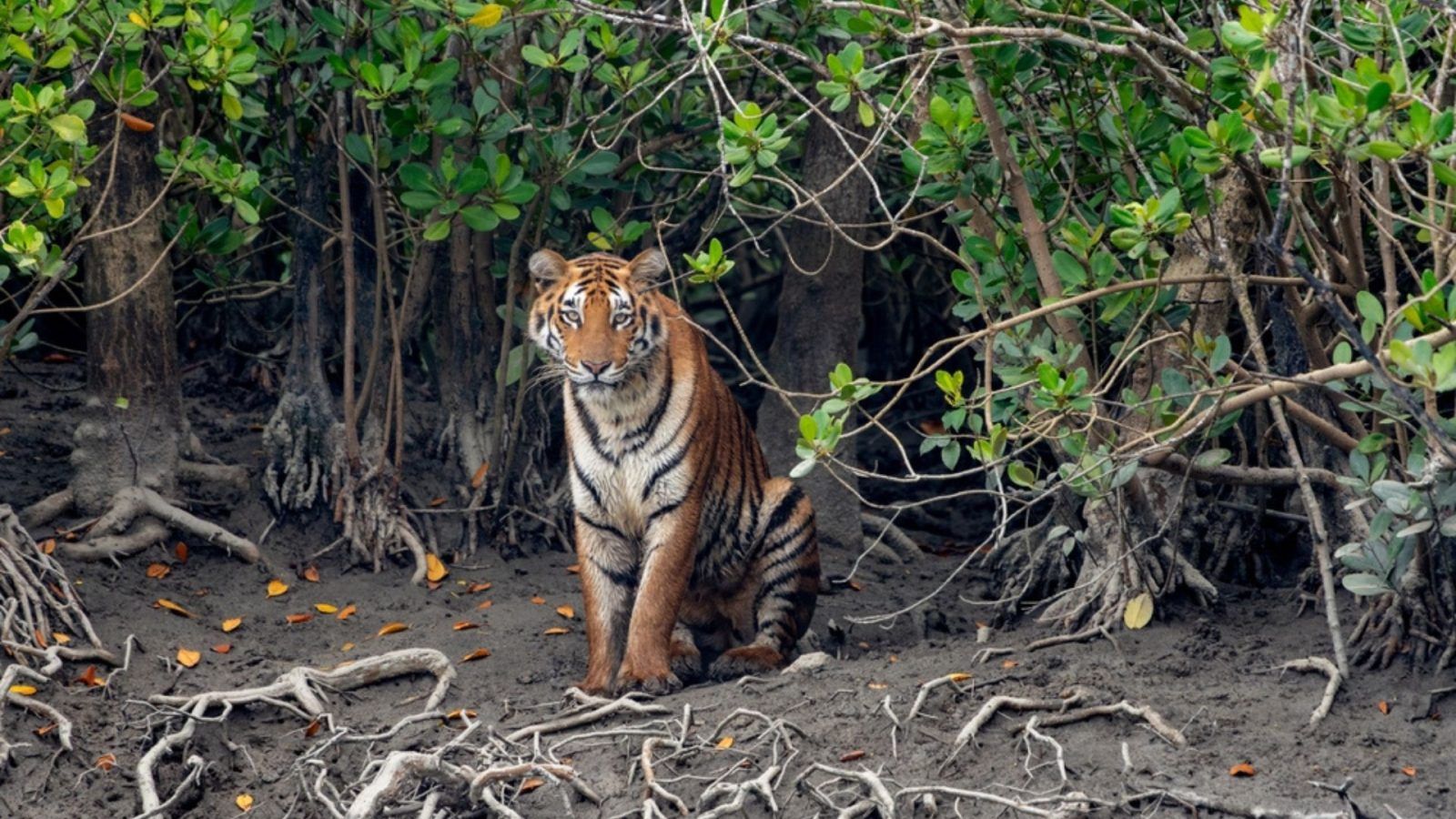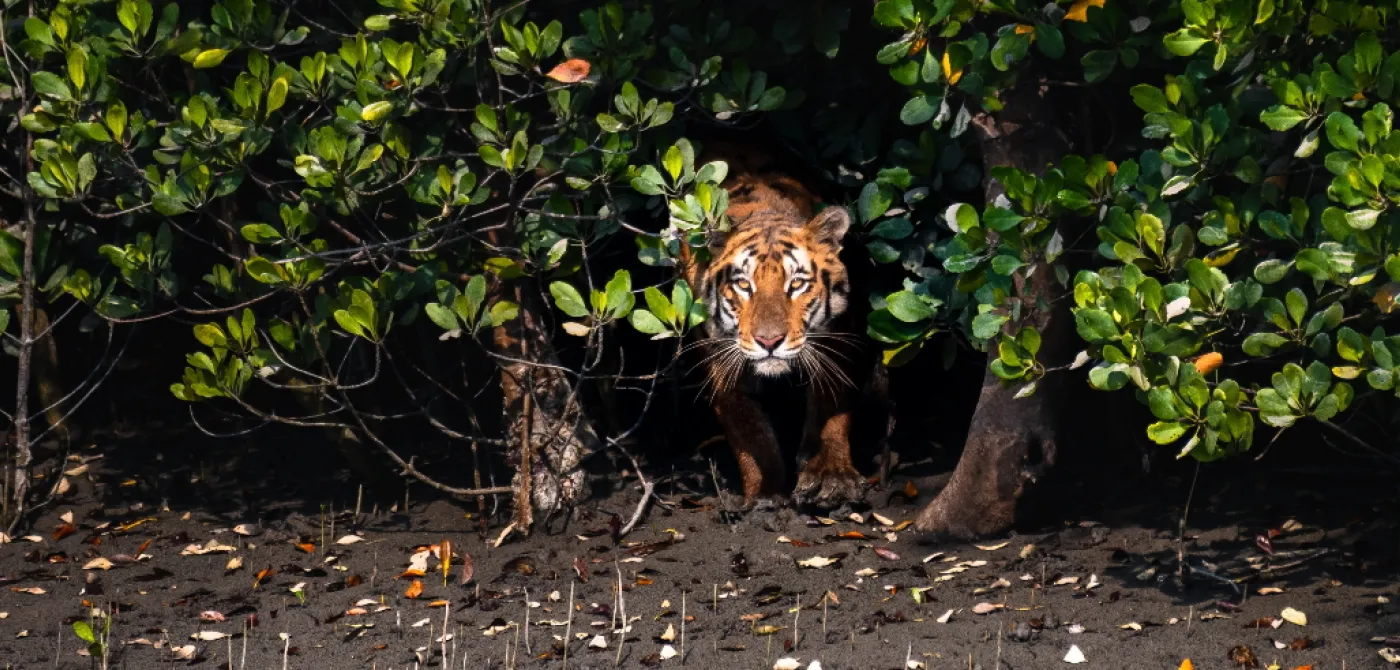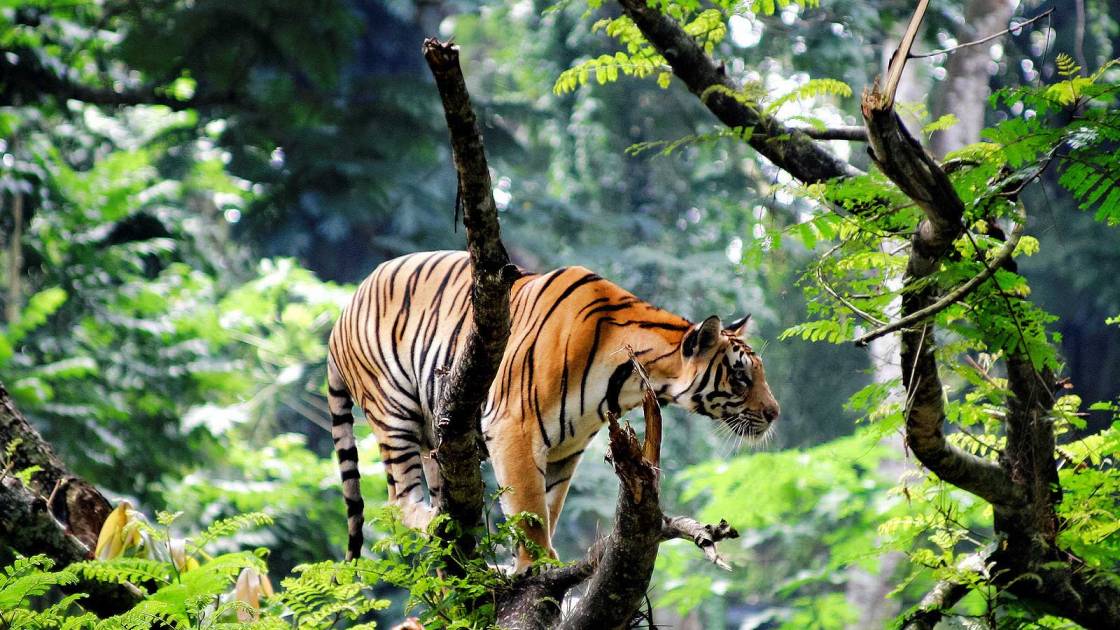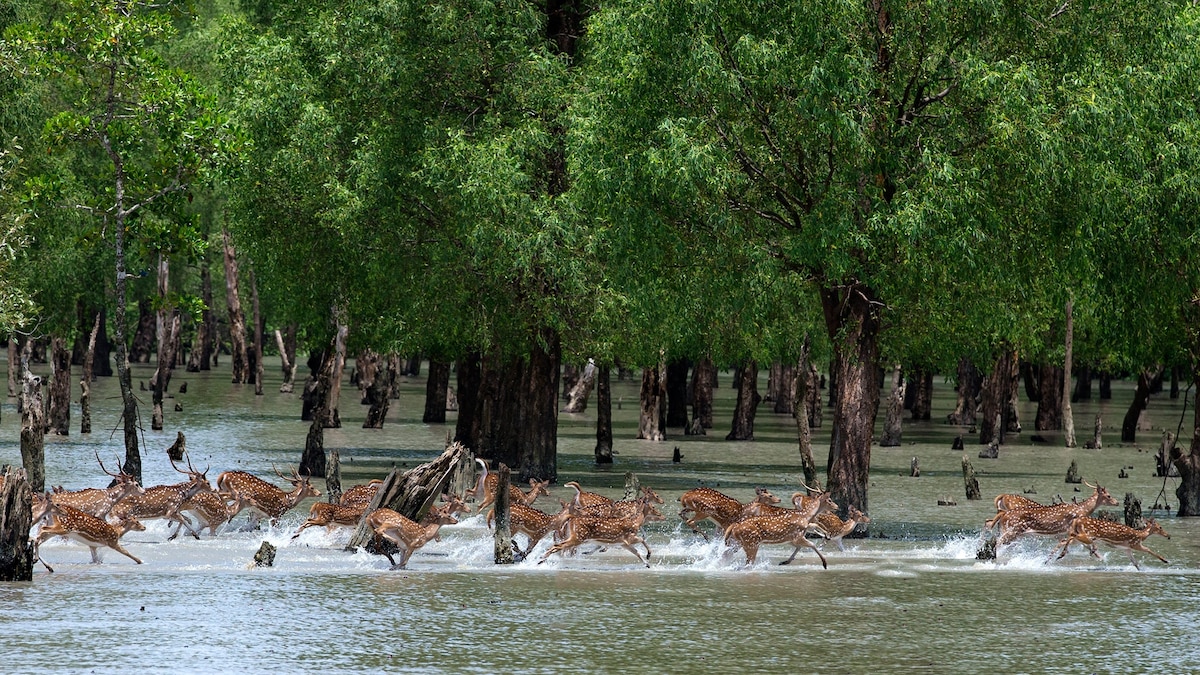UNESCO World Heritage Site: The Sundarbans, a sprawling and unique mangrove forest located in the delta region of the Padma, Meghna, and Brahmaputra rivers, is one of the most remarkable ecosystems on Earth. Straddling the border between India and Bangladesh, this majestic forest is home to an extraordinary variety of plant and animal life, including the endangered Bengal tiger. In 1997, UNESCO recognized the Sundarbans as a World Heritage Site, highlighting its global significance and ecological importance.
Read More:
| Guided Tours vs. Self-Exploration |
| Medical Facilities in Sundarbans |
| Photography Tips for Sundarban Tours |
| Cultural Experiences in Sundarbans |

This blog delves into the rich natural beauty and biodiversity of the Sundarbans, exploring its history as a UNESCO World Heritage Site, its ecological significance, and the challenges it faces. We will also discuss ongoing conservation efforts aimed at protecting this invaluable ecosystem for future generations.
1. The Sundarbans: A Unique Ecosystem
The Sundarbans is the largest mangrove forest in the world, covering approximately 10,000 square kilometres. The name “Sundarbans” translates to “beautiful forest” in Bengali, a fitting title for a region known for its lush greenery, winding waterways, and vibrant wildlife. Located at the mouth of the Bay of Bengal, the forest spans parts of India’s West Bengal state and Bangladesh’s Khulna Division.
Mangrove forests, such as the Sundarbans, are uniquely adapted to life in saltwater environments. The dense, tangled roots of mangrove trees create a network of land and water that supports a wide variety of species. This delicate balance between land and sea is what makes the Sundarbans such a vital and dynamic ecosystem.

A Cradle of Biodiversity
The Sundarbans is one of the most biologically diverse regions on the planet. It is home to over 260 species of birds, 120 species of fish, 42 species of mammals, and 35 species of reptiles. The forest also supports numerous species of amphibians, crustaceans, and invertebrates, making it a haven for biodiversity.
Read More:
Among the most iconic species of the Sundarbans is the Bengal tiger (Panthera tigris tigris). This critically endangered subspecies is uniquely adapted to the mangrove environment, making it one of the few tiger populations in the world that regularly swims between islands and hunts in aquatic environments. The Sundarbans are estimated to be home to around 100 Bengal tigers, although the exact number remains uncertain due to the dense and difficult-to-navigate terrain.

In addition to tigers, the Sundarbans is home to other threatened species, including the saltwater crocodile (Crocodylus porosus), the Indian python (Python molurus), and the Ganges river dolphin (Platanista gangetica). The rich birdlife includes species such as the lesser adjutant, the masked finfoot, and the mangrove whistler.
2. UNESCO World Heritage Status: Global Recognition of Ecological Importance
In 1997, the Bangladesh portion of the Sundarbans was inscribed as a UNESCO World Heritage Site under the natural criteria for its exceptional biodiversity and unique ecosystem. The UNESCO designation recognizes the Sundarbans as “the largest tidal halophytic mangrove forest in the world” and highlights its role in supporting a wide range of species, including many that are globally endangered.
This recognition brings international attention to the ecological and conservation value of the Sundarbans, ensuring that efforts to protect the forest receive global support. The UNESCO World Heritage designation also helps raise awareness about the critical importance of mangrove ecosystems in climate regulation, coastal protection, and biodiversity conservation.

Why the Sundarbans Qualifies as a World Heritage Site
To be recognized as a UNESCO World Heritage Site, a location must meet one or more criteria that demonstrate its “outstanding universal value.” The Sundarbans qualifies under several key criteria:
- Biodiversity and Endangered Species: The Sundarbans is home to an extraordinary range of species, many of which are rare or endangered. The Bengal tiger, the largest predator in the region, is a flagship species, but the forest also supports critical populations of other vulnerable animals, including crocodiles, dolphins, and turtles.
- Unique Ecological Processes: The Sundarbans is a dynamic environment where freshwater from rivers meets saltwater from the ocean, creating an intricate and ever-changing ecosystem. The daily tidal rhythms, seasonal floods, and shifting salinity levels shape the flora and fauna, making the Sundarbans a prime example of a unique ecological process.
- Natural Beauty: The Sundarbans are renowned for their breathtaking landscapes, which include vast expanses of mangrove forests, winding rivers, and dense jungles. The interplay of land and water creates a visually stunning environment that is both awe-inspiring and mysterious.

3. Ecological and Environmental Significance
The Sundarbans is not just a sanctuary for wildlife; it is also a crucial buffer against climate change and natural disasters. Mangrove forests like the Sundarbans play a vital role in stabilizing coastlines, protecting inland areas from storm surges, and acting as natural carbon sinks. We can explore further details regarding Ecotourism Initiatives in Sundarbans.
1. Coastal Protection and Climate Resilience
The Sundarbans is located in one of the most vulnerable regions to climate change in the world. The Bay of Bengal experiences frequent tropical storms, cyclones, and storm surges, all of which pose a significant threat to coastal communities. The dense network of mangrove roots in the Sundarbans helps to reduce the impact of these natural disasters by absorbing wave energy and trapping sediments, thus preventing erosion.
As sea levels continue to rise due to climate change, the role of the Sundarbans as a natural defence becomes even more critical. Without the protective barrier of the mangrove forest, millions of people living in low-lying coastal areas would be at increased risk of flooding and displacement.

2. Carbon Sequestration
Mangrove forests are among the most effective ecosystems at sequestering carbon. The Sundarbans’ dense vegetation and organic-rich soils store large amounts of carbon, helping to mitigate the impacts of climate change by absorbing carbon dioxide from the atmosphere. This “blue carbon” capacity makes the Sundarbans an important asset in global efforts to reduce greenhouse gas emissions.
3. Fisheries and Livelihoods
The Sundarbans are also essential for supporting local economies. The region’s waterways are teeming with fish, crabs, and shrimp, which are vital sources of income for the people who live in and around the forest. Additionally, honey collection and eco-tourism are important industries that rely on the health and sustainability of the mangrove ecosystem.
4. Threats to the Sundarbans: Challenges in Conservation
Despite its status as a UNESCO World Heritage Site and its ecological importance, the Sundarbans face numerous threats that endanger both its wildlife and the people who depend on it. These challenges include habitat destruction, climate change, and human-wildlife conflict.
1. Deforestation and Habitat Loss
One of the most pressing threats to the Sundarbans is deforestation, driven by illegal logging, agriculture, and aquaculture. The clearing of mangroves for shrimp farming and other commercial activities has resulted in significant habitat loss, reducing the area available for wildlife and increasing the vulnerability of the coastline to erosion and storm surges.
2. Climate Change and Rising Sea Levels
Climate change is an existential threat to the Sundarbans. Rising sea levels and more frequent and intense cyclones pose a serious risk to the delicate balance of the ecosystem. Higher salinity levels in the water could alter the composition of mangrove species, while extreme weather events could cause widespread damage to both the forest and the communities that rely on it.
3. Human-Wildlife Conflict
The presence of Bengal tigers in the Sundarbans creates a unique challenge for conservationists. While tigers are a symbol of the region’s biodiversity, they also pose a danger to the people who live in and around the forest. Human-tiger conflict, particularly attacks on livestock and, in some cases, humans, has led to tension between conservation efforts and local communities. Balancing the need to protect tigers with the safety and livelihoods of people is a complex and ongoing issue.
5. Conservation Efforts and Sustainable Management
Recognizing the importance of the Sundarbans, both India and Bangladesh have implemented a variety of conservation strategies to protect the forest and its inhabitants. These efforts focus on sustainable management, community involvement, and international cooperation.
1. Protected Areas and Wildlife Sanctuaries
Both India and Bangladesh have established protected areas within the Sundarbans to safeguard their biodiversity. In India, the Sundarbans National Park is a designated tiger reserve, while Bangladesh has created several wildlife sanctuaries within the forest. These protected areas limit human activities, such as fishing and logging, to reduce the impact on the environment. Also, you can Book the Sundarban Tour At Maity Tourism and Sundarban Leisure Tourism Powered By Argusdna,

2. Community-Based Conservation
Engaging local communities in conservation efforts is key to the long-term success of protecting the Sundarbans. Eco-tourism initiatives, sustainable fishing practices, and alternative livelihoods, such as honey production, are being promoted to reduce the pressure on the forest while providing economic benefits to the people who depend on it.
3. International Collaboration
As a transboundary ecosystem shared by India and Bangladesh, the Sundarbans require international collaboration for effective conservation. Both countries have been working together to address shared challenges, such as climate change, wildlife trafficking, and habitat restoration. Cross-border cooperation is essential for ensuring the long-term survival of the Sundarbans.
Conclusion: UNESCO World Heritage Site
The Sundarbans UNESCO World Heritage Site is a natural treasure of immense ecological, environmental, and cultural significance. Its rich biodiversity, unique mangrove ecosystem, and vital role in coastal protection make it one of the most important and fragile ecosystems in the world.
